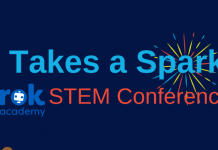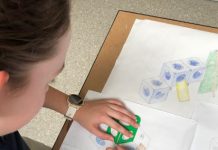 I’m dedicated to teaching and working with young people. I’ve been fortunate to have had nearly 44 years of fulfilling my dedication! I’ve seen so many changes over the years but none so powerful and empowering as ‘technology’ in education.
I’m dedicated to teaching and working with young people. I’ve been fortunate to have had nearly 44 years of fulfilling my dedication! I’ve seen so many changes over the years but none so powerful and empowering as ‘technology’ in education.
In my role as Junior School Technologies Coordinator, I’m excited to share with the teachers and students the possibilities technology brings to the classroom: the excitement and engagement as virtual and augmented reality are explored and created by the students, prototyping ideas using LittlebIts and building and coding robots to execute a task using sensors!
AND…
I am also fortunate to work as a sessional tutor at Griffith University under the guidance of an incredible educator, Dr Sarah Prestridge. Trimester 2 2019, we undertook a unit of work with 4th year pre-service teachers called ‘Preparing to Teach in the Digital Classroom’.
The course enabled students to demonstrate technological pedagogical content knowledge needed for teaching in the 21st Century. Digital Pedagogies were examined both theoretically and practically so that students were able to articulate and justify the benefits to learning that the integration of ICT enables. Students began to shape their pedagogies in ways not previously possible, to enhance achievement, create new learning possibilities and extend interaction with local and global communities.
 The task for the students was to design and create a completely online unit of work for ‘primary aged’ students to engage in within any part of Queensland. Many online courses, such as MOOCs, are available for adults and young adults but not for such young children…..so, it was going to be a challenge!
The task for the students was to design and create a completely online unit of work for ‘primary aged’ students to engage in within any part of Queensland. Many online courses, such as MOOCs, are available for adults and young adults but not for such young children…..so, it was going to be a challenge!
As convenors of the course, Deniese Cox, Sarah and I, analysed examples of different online tools and methods used by online educators such as Jack, an online ESL teacher, and Glen Watt from Distance Education. Plenty of design theory, structure, frameworks, digital tools were examined and discussed during lectures and tutorials. The online unit needed to be constructed with good theoretical design features and effective course flow demonstrating the integration of digital tools to support pedagogy that enabled high levels of interactivity and meaningful learning.
The online unit needed to be constructed with good theoretical design features and effective course flow demonstrating the integration of digital tools to support pedagogy that enabled high levels of interactivity and meaningful learning.
The students decided which online platform they would use, many chose Wix website maker, a few selected Weebly, Google slides and Nearpod.
Well….
The students did an amazing job!
Units topics included…. Space, Sorry Day, Survival, Life Cycles, Day & Night, Map Work, Celebrations, Tennis, Community, Convicts, Earth & Space, Migration, Habitats…….. and many more
Throughout the units there were plenty of ideas to be found and different software and tools:
Padlet, Teams, Zoom, NASA website, Merge Cubes, Clarendon Learning, Legends of Learning, Sheppard Software, Life Science, Quizzes, Paint Apps, Poll Everywhere, QR codes & QR code readers, Glogster, iMovie, Kahoot!, Popplet, ReadWriteThink, Tiki-Toki, myHistro, Twiddla…….so many more!
A couple of units (with permission) ‘BearHunt‘ and ‘Solar Energy’ to view as examples.

























